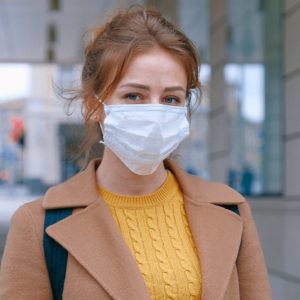Despite all of the death and despair that has accompanied the COVID-19 epidemic, much of the long-term messaging has been hopeful. Early on, we were told if we could “bend the curve,” we could control the pandemic. Then, when vaccine development ramped up, the messaging focused on how vaccines would allow a return to normal by achieving herd immunity. Even the herd immunity threshold was optimistic in the beginning, with experts suggesting that vaccinating as little as 60 percent of the population might achieve herd immunity.
Of course, the actions we’ve taken to control COVID-19 aren’t for nothing. Lockdowns prevented countless deaths, and vaccines are still our best hope at achieving something closer to normalcy. However, it’s time that we face the cold-hard reality that COVID-19 will be with us forever and the grand idea of herd immunity will likely remain out of reach.
Herd immunity is a somewhat slippery idea that depends on what population one considers as the “herd.” Most Americans probably think of herd immunity in terms of the U.S. population as a whole. Since 14 percent of unvaccinated people say they will indefinitely remain that way, and another 29 percent say they will only get vaccinated if required, it’s going to be hard for the United States as a whole to reach the 80 percent vaccination level that experts are now saying may achieve herd immunity.
We also live in a global community, which means we’re only as protected from COVID-19 as the least protected country. That is why it’s vital we help distribute vaccines to low and middle-income countries. This is especially true as global travel resumes. Expanding global access to vaccines is not only important to protect us now, but it’s also important to help prevent new—potentially more dangerous—variants from emerging. Viruses hijack a cell’s systems to make copies of their genetic information. Every copy made is an opportunity for a new mutation that could evade current vaccines. Preventing as many infections as possible is in everyone’s best interest.
Even though herd immunity on the national or global scale is highly unlikely at this point, it’s possible to achieve herd immunity on a smaller, community level. The population of a city, county, or town might achieve a high enough vaccination rate to stop the spread of the virus in that area. That’s not to say sporadic cases won’t occur, it’s just saying that larger outbreaks will become significantly less likely.
More importantly, the cumulative effect of smaller scale herd immunity is that the national case count will drop and we will bend the curve even further. Smaller-scale herd immunity still leaves the areas where vaccination levels are lower at significant risk of larger outbreaks. While achieving herd immunity is the ideal, it begins at the individual level with each person choosing to get vaccinated.
So, how to reach the vaccine-hesitant? Unfortunately, there’s no one method that will convert every person who is on the fence about getting vaccinated. Individuals will have different reasons for their opposition to vaccination and addressing their concerns without judgment is a good place to start. Meeting people where they are and creating easy access is another way to reach people who may just be ambivalent about getting a vaccine. Finally, providing an incentive is an effective method that some areas are using to convince people who are vaccine-hesitant. Ohio Gov. Mike DeWine embraced this approach by announcing a one million dollar lottery drawing that only vaccinated Ohioans are eligible to win.
The reality is that even if global herd immunity were achievable, we would still see occasional outbreaks of COVID-19. Once a disease is established, it’s very difficult to eradicate it completely. In fact, we’ve only achieved complete eradication of one human disease, smallpox. We need to accept that we have to learn to live with COVID-19 and to mitigate risk. Getting as many people as possible vaccinated is the best way to do this.

